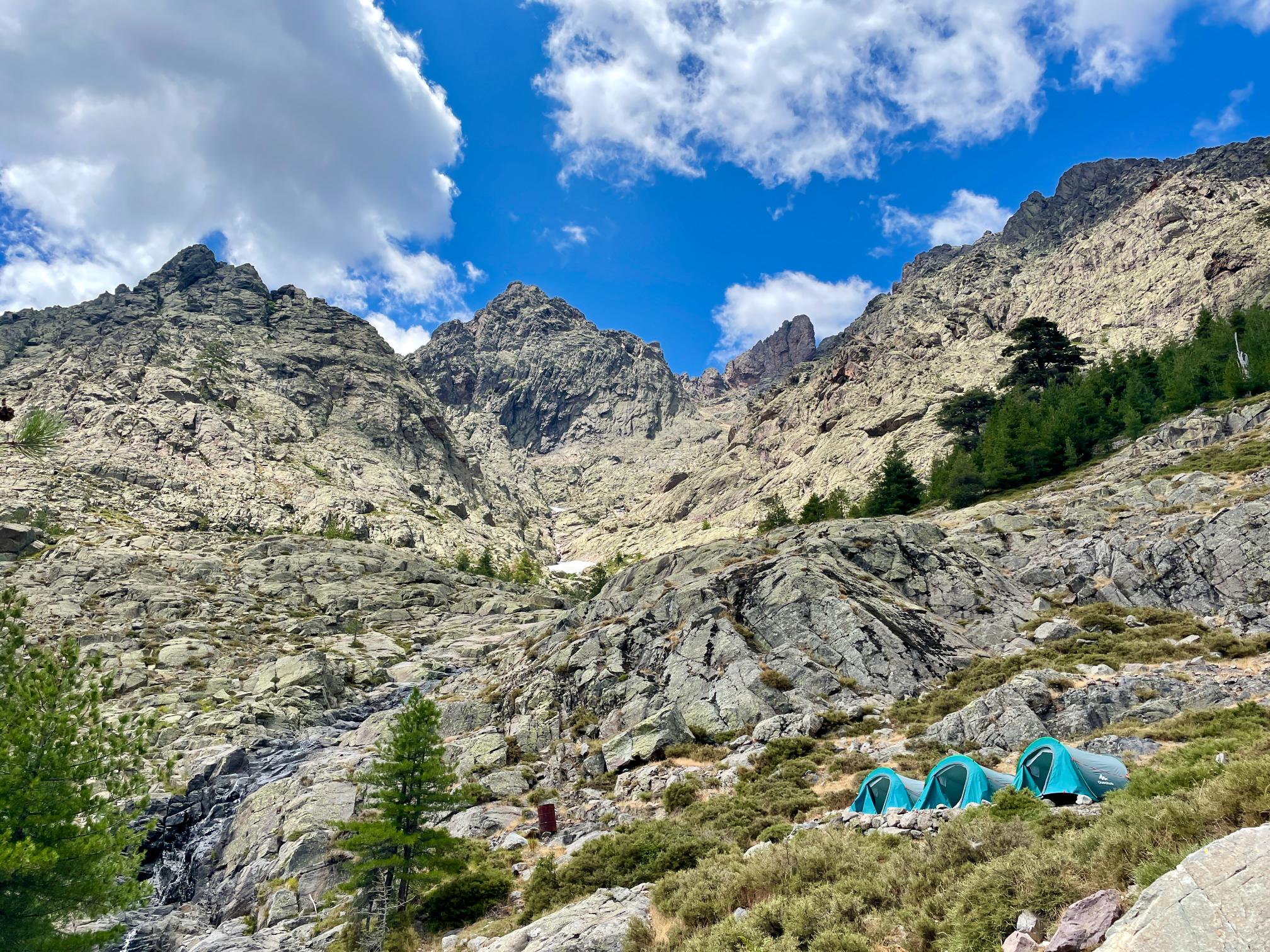The GR20 in Corsica is often described as one of the toughest long-distance trails in Europe. With daily stages that can last up to 10 hours and have 1,000m (3,280ft) of elevation gain, completing the route requires stamina, good preparation, and careful planning – especially when it comes to where you’ll stay each night.
Accommodation along the GR20 is predominantly in mountain huts known as refuges, which are managed by Corsica National Park/Parc Naturel Régional de Corse (PNRC). However, there are some alternatives, ranging from family-run hotels to campsites and converted shepherd’s cabins known as bergeries.
Each option has its own advantages depending on your budget, comfort preferences and hiking style. In this guide, we’ll walk you through the main types of accommodation available, what to expect from them, and where you’ll find them along the trail – helping you make the best choices for your GR20 adventure.
Read more: Europe's Toughest Trek: GR20 Corsica 16-Stage Guide
GR20 Refuges
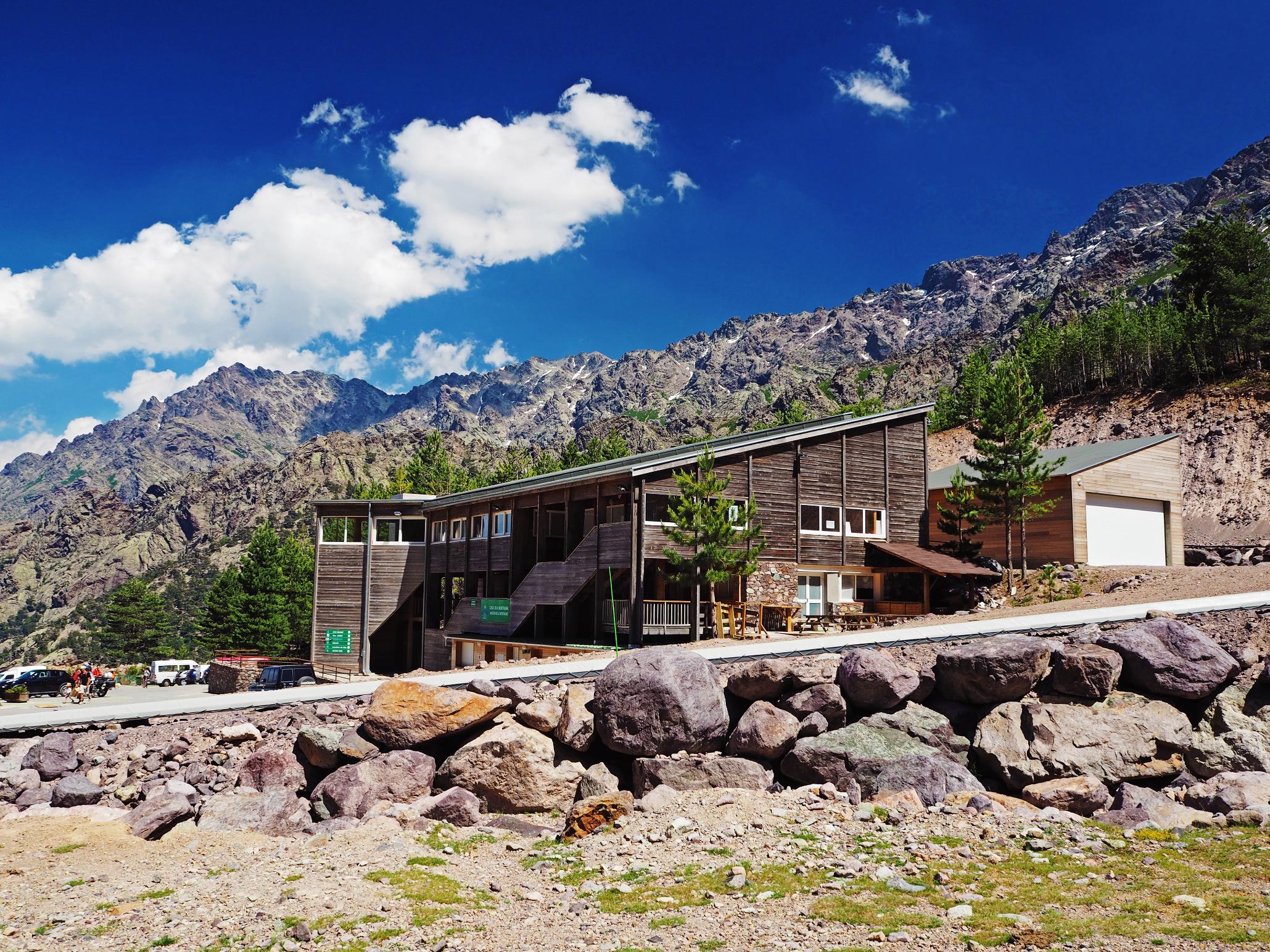
The vast majority of stages on the GR20 will begin and end at a PNRC refuge, which has been set up to house hikers while out on the trails. PNRC refuges are open all year round, but are only staffed between the end of May to the beginning of October. Outside of these months you won’t be able to purchase food, and services such as gas, water and electricity might be shut off.
While each refuge differs slightly, they are generally simple stone or wooden buildings with dormitory-style sleeping arrangements, communal eating areas and kitchen facilities. They cost around 17 euros (£14.64/$19.69) per night.

Dormitory sizes are large, with between 26 to 32 beds in the refuges on the northern half of the GR20. Make sure you bring a sleeping bag, because blankets aren’t provided. The amenities vary – some refuges have hot showers, flushing toilets and electric charging points, while others only have cold showers and composting toilets. Electricity is limited and charging your device incurs a cost where available (we advise bringing along a portable battery pack).
During the summer months, the refuges serve dishes such as pasta and stew for dinner, as well as breakfast, which you can order upon arrival. At lunchtime, refuges serve a lighter menu of dishes like charcuterie, soup and omelette. They also have small shops where you can buy drinks and snacks.
Advance booking at the refuges is compulsory, due to limited availability. If you’re on a guided hike, your host will handle accommodation reservations. If you’re hiking independently, you can make a booking on the PNRC website.
Bergeries
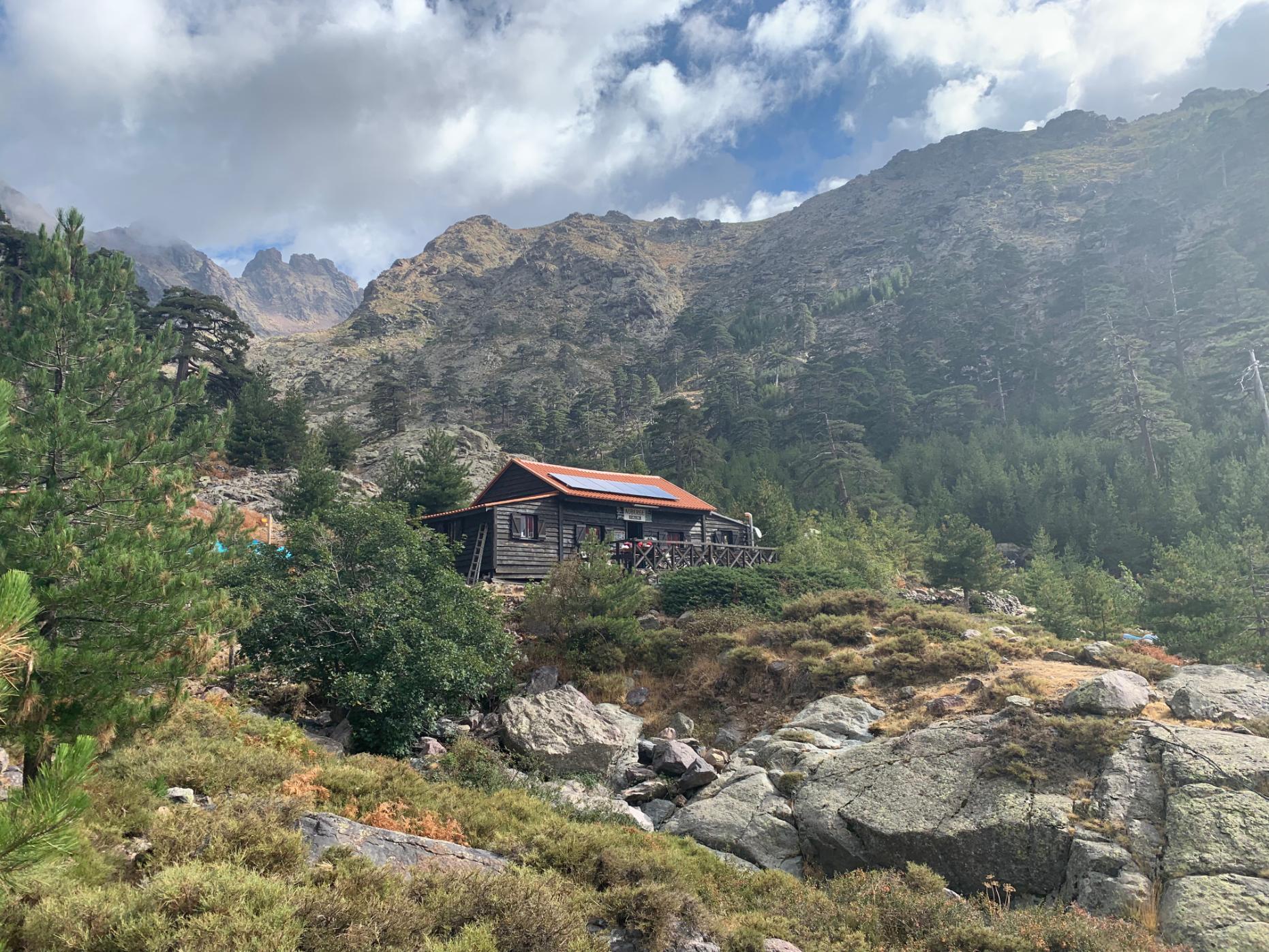
Bergeries are former shepherd’s cabins, which have been converted into private guesthouses. These are privately owned and provide a range of accommodation, from tents to dormitories and smaller private chalets. As with the refuges, we’d recommend advance booking.
Meals are provided, with an emphasis on using local produce. One example is the Bergerie de Basseta, located on the Cuscione Plateau, which is renowned for food, including grilled meats, homemade sheep’s cheese and charcuterie.
You’ll often find bergeries in the middle of an official GR20 stage. This makes them a great place to stop for drinks and refreshments.
Campsites
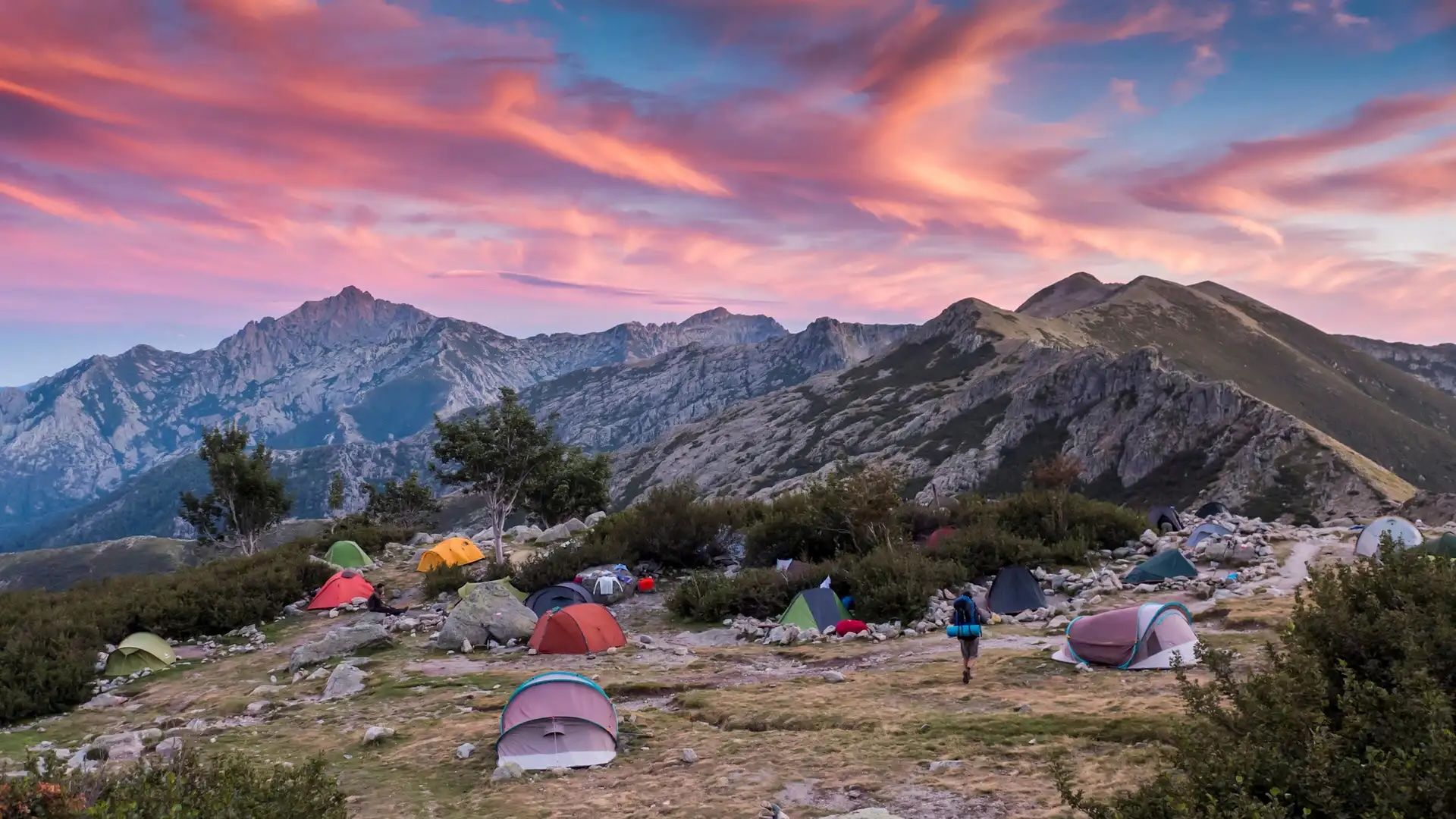
Bergeries and refuges often have campsites alongside dormitory accommodation, allowing you a little more privacy and the chance to enjoy Corsica’s nature. Campsites share the bathroom facilities of the refuge they are attached to, and have outdoor kitchens where you can cook. You can also order dinner and breakfast.

Bivouacking at a PNRC refuge is the most cost-effective option on this list at €9 (£8/ $10) per night – and a similar price at bergeries – but you will then need to carry your camping gear with you. It’s also possible to rent a tent and a mattress, which is slightly more expensive than a dormitory bed at €21 (£18/ $24) for one person, and €31 (£27/ $36) for two. Campsites, like the refuges, must be booked in advance.
Gîtes
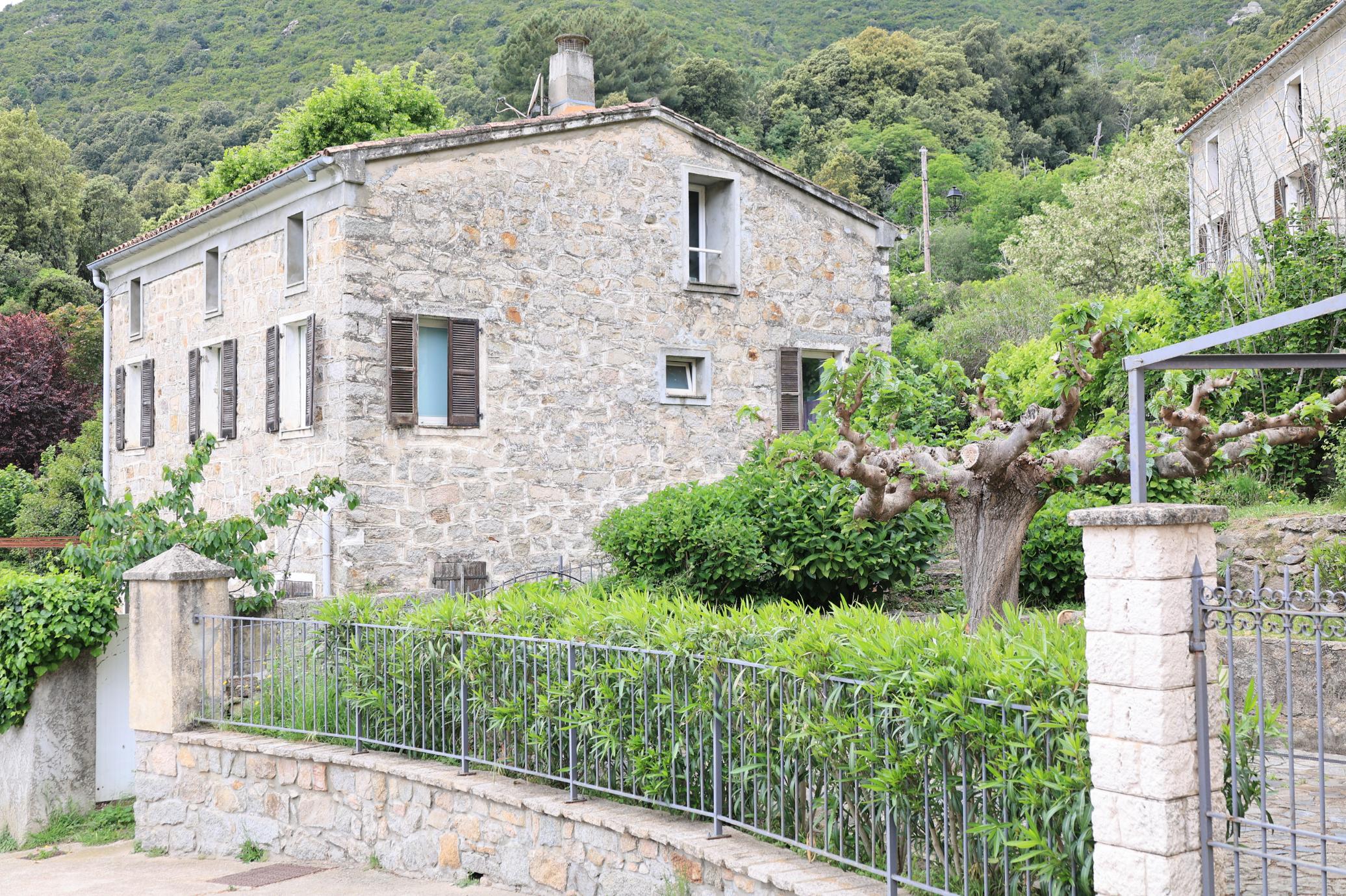
A ‘gîte’ refers to a self-catered holiday rental, normally in a rural location. They tend to be in converted barns or small cottages, although some are more luxurious, with pools and air conditioned bedrooms. Meanwhile, a gîte d'étape is a type of lodging found along long-distance trails, providing dormitory accommodation, meals and cooking facilities for travellers.
You’ll find several privately run gîtes along the GR20, especially in the small villages you pass through. Costs range from around €20–30 (£17–26/ $23–35) for bunkbed accommodation, and €30–60 (£26–£52/ $35–70) per person for a private room.
Villages on/near the GR20
Calenzana
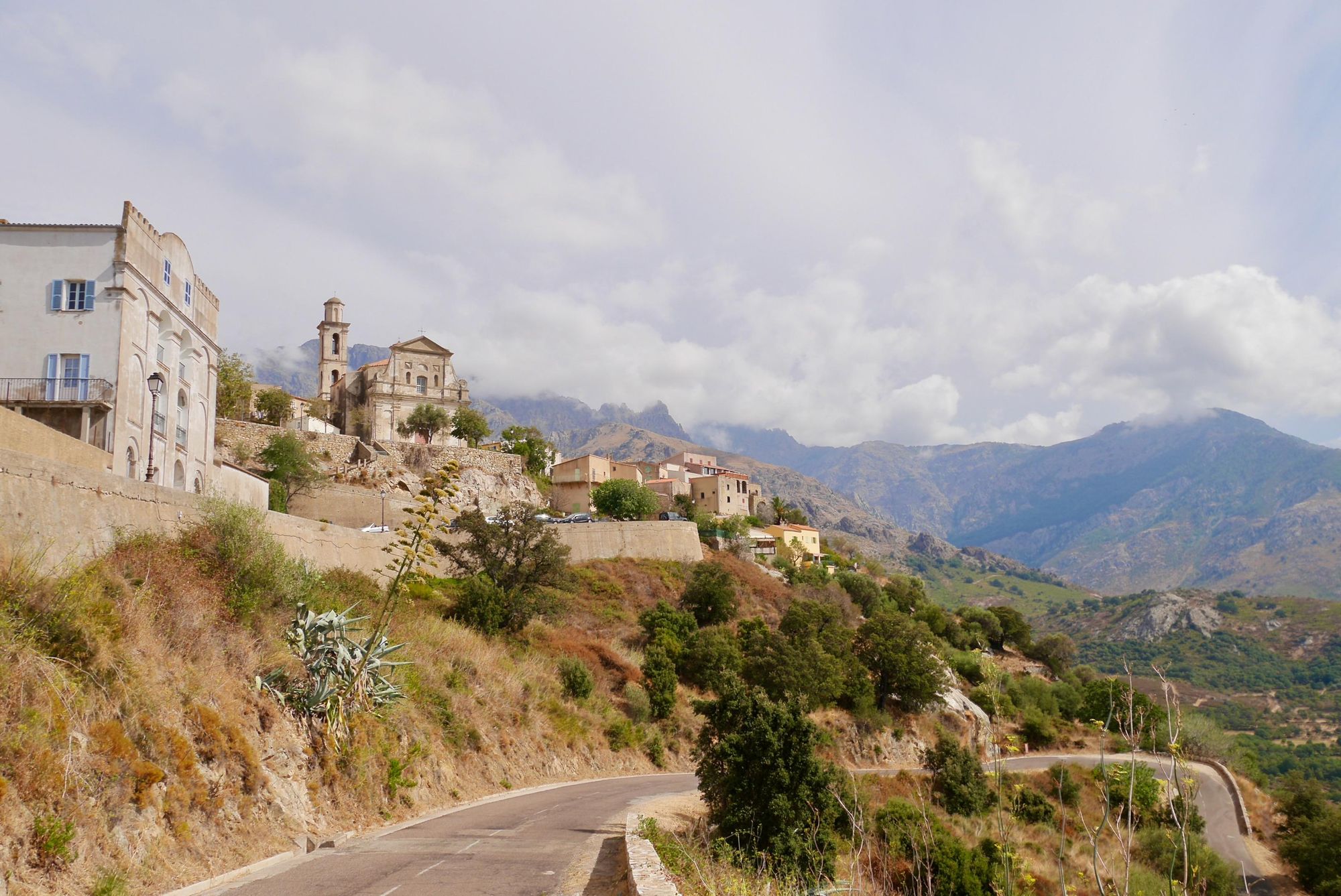
You’ll start (or finish) the GR20 hike in Calenzana, a pretty village located at the foot of Monte Grosso and connected by road to Calvi. There is a range of accommodation here, from the Gîte d'Étape Municipal (dormitory accommodation owned by the town) to more upmarket B&Bs.
There are also a number of bars and restaurants where you can fuel up before heading off on your hike. The restaurant A Stazzonna serves traditional Corsican dishes such as civet de sanglier (wild boar casserole) and pulenda (a polenta-equivalent made with chestnut flour, and served with cheeses and charcuterie).
Ascu Stagnu/Asco
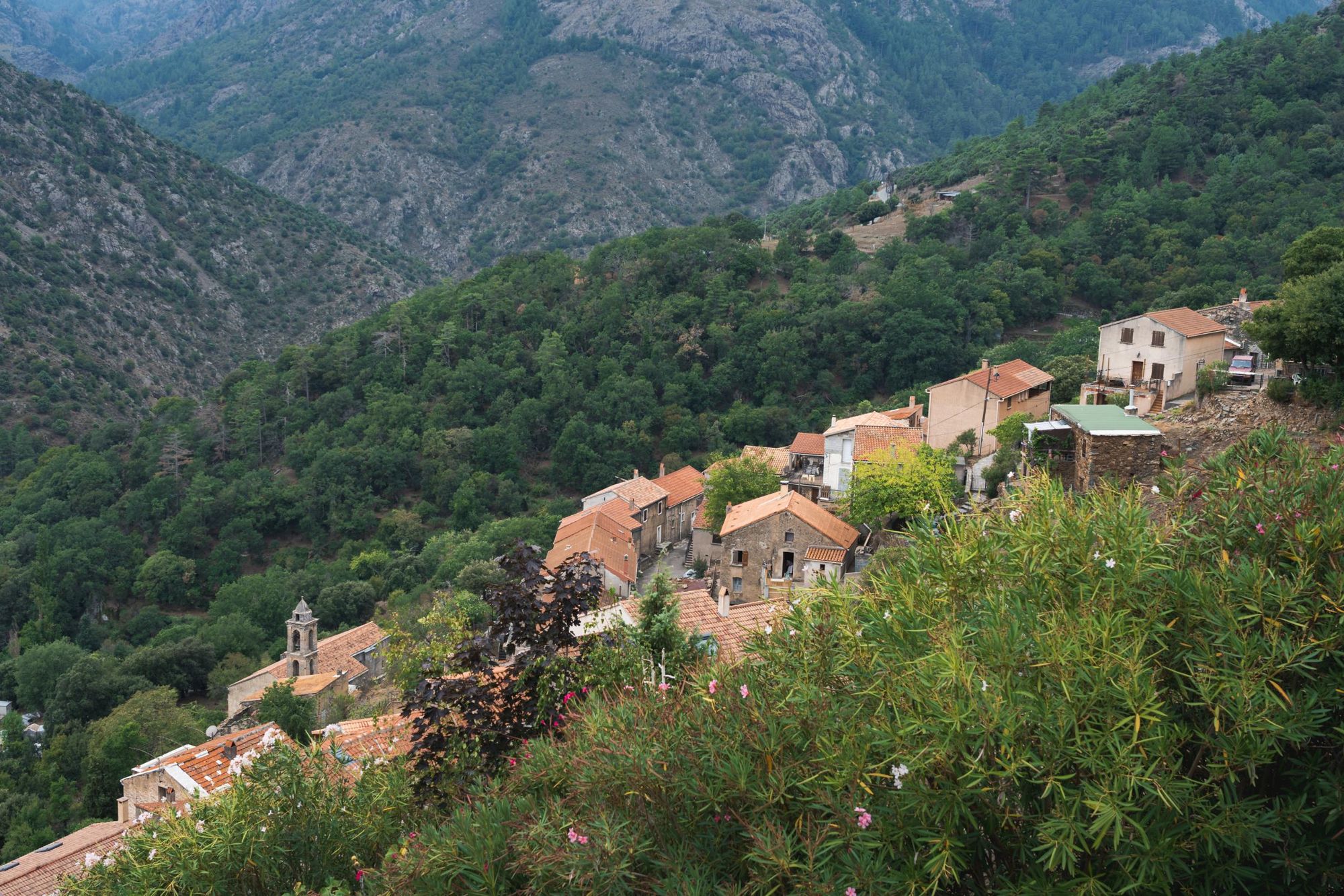
Ascu Stagnu is a ski resort which marks the end point for stage three of the GR20. There are two accommodation options here – a PNRC refuge and the more comfortable Hôtel le Chalet, which offers private rooms. Ascu Stagnu is connected by road to the small village of Asco, which has several small family-owned hotels where you can stay the night. A bus service runs between Asco and Ponte Lecchia, making this a good place to leave or join the GR20.
But this isn’t just a place to pass through – it’s also a great natural beauty spot. The Asco River threads its way down the Gorges de l’Asco, running close to both Ascu Stagnu and Asco. There are natural pools where you can swim in the cold, clear water.
Vizzavona

Vizzavona marks the halfway point on the GR20, dividing the challenging north section from the gentler southern section. With good rail and bus connections, it’s a popular point of arrival and departure.
But we’d caution you against simply passing through. There are plenty of attractions in the surrounding mountains and laricio pine forests, from neolithic caves to the picturesque Cascade de Anglais, a waterfall gushing over rock.
There is also a wide range of accommodation options in Vizzavona including a campsite, B&Bs and hotels. We recommend the Monte d’Oro, a former 19th century mansion located in the forest south of the town centre – it has a shuttle service for walkers on the GR20.
Cozzano
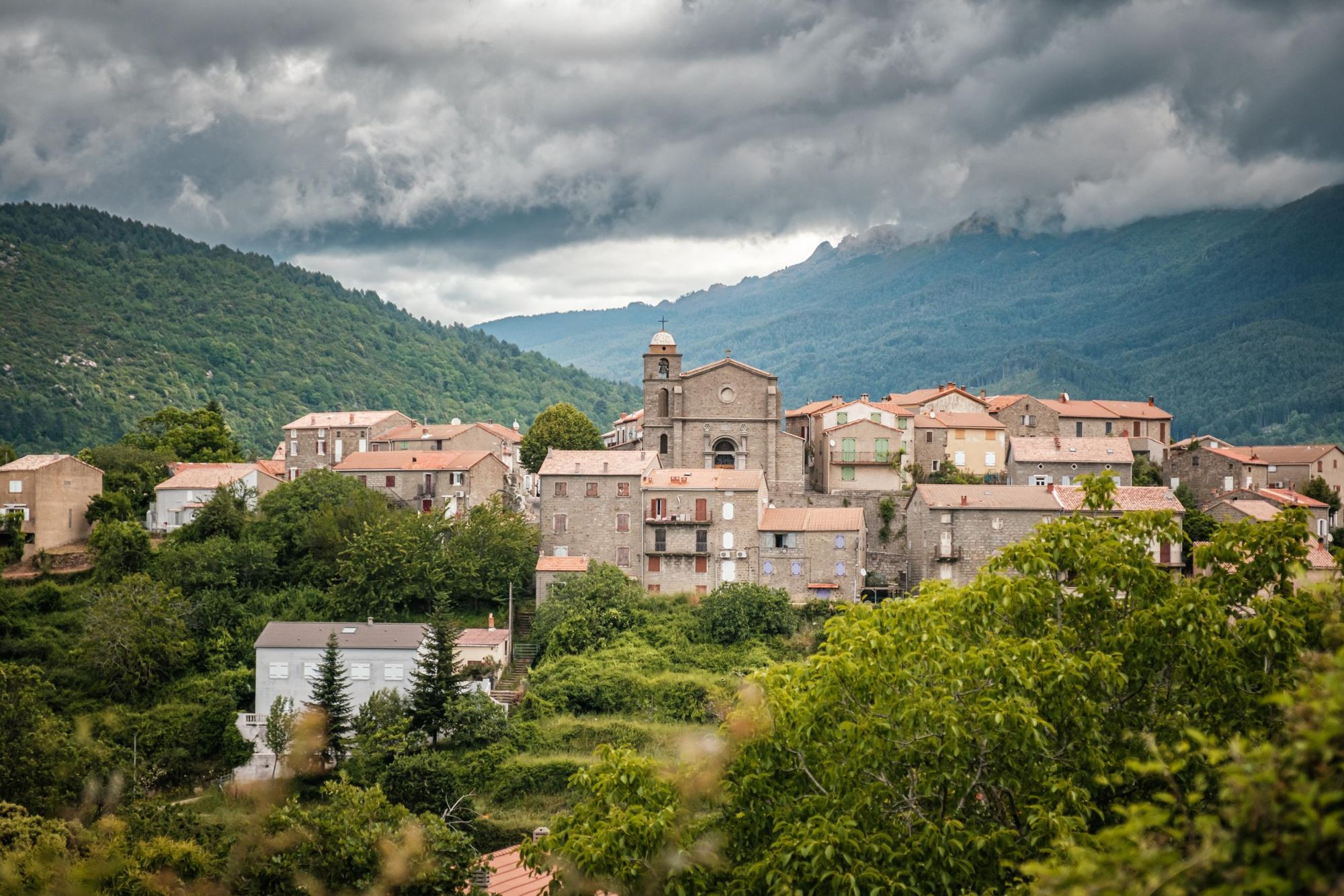
If you’d like to leave (or join) the GR20 at stage 12, you can hike to Cozzano from Refuge d’Usciolu. It’s a hilltop village surrounded by forested mountains – a scenic highlight when you glimpse it from the trail. There are several accommodation options, including a small guesthouse called A Filetta and several gîtes.
Village de Bavella

Village de Bavella is the final stop on stage 15 of the GR20. It’s a small village dwarfed by the huge granite spikes of the Aiguilles de Bavella. The only place to stay here is the Auberge du Col de Bavella, a restaurant and hostel providing dormitory accommodation. However, if you head south down the road to the larger village of Zonza, you’ll find a wider variety of accommodation options.
Conca
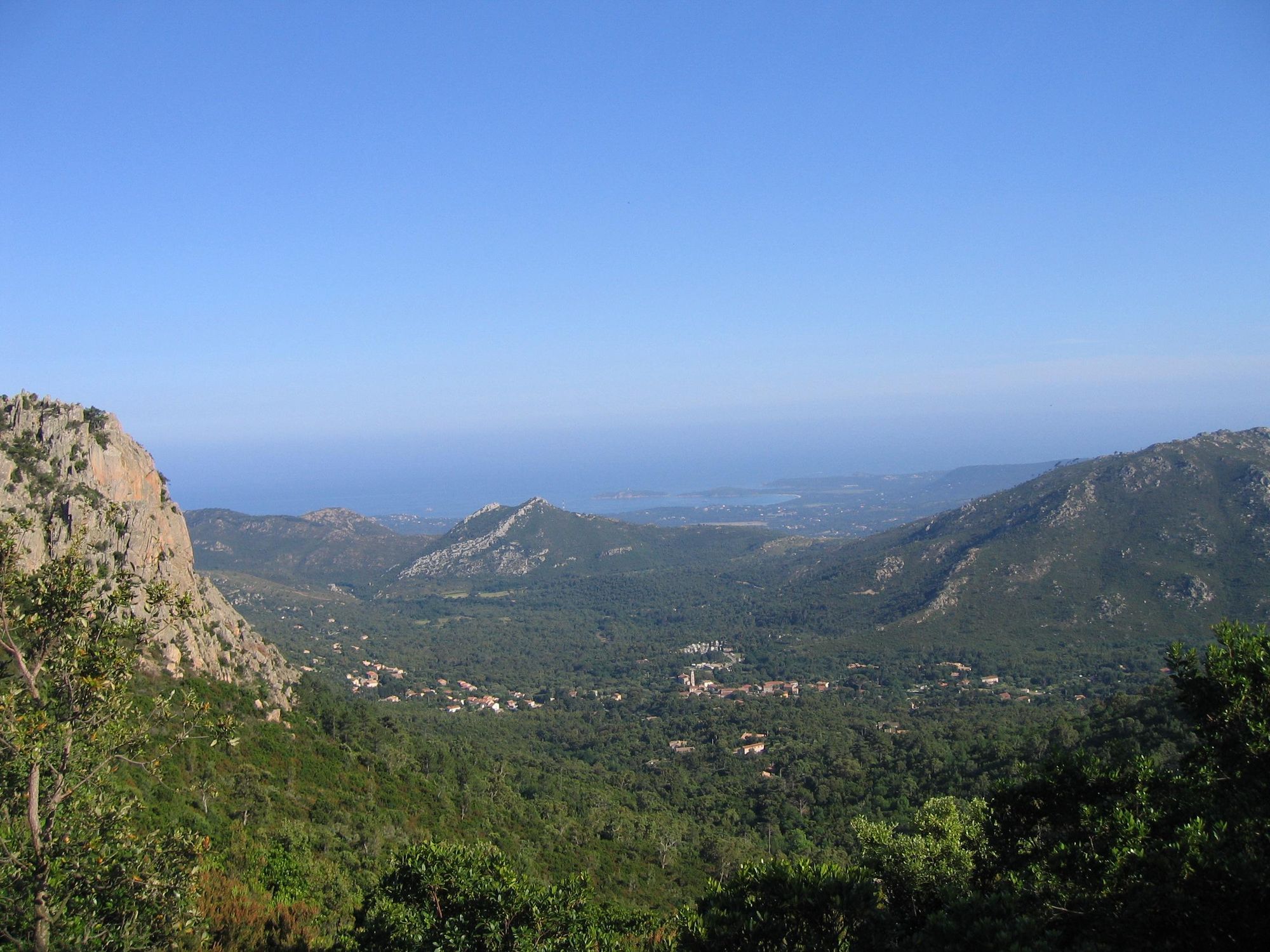
Conca is the end point of the GR20, a village located between the mountains and the coast. With its welcoming atmosphere and proximity to beaches such as Fautea and Plage de l'Ovu Santu, it’s a good place to recuperate after long days of hiking. The village boasts gîtes, hotels and B&Bs where you can stay.
Inspired? Trek the GR20 in Corsica with us, and have your accommodation and transport taken care of.


